Just looking for our Best Pet Adoption Website examples list?
Why Your Animal Rescue Website Design Can Make or Break Your Mission
When someone visits your animal rescue website, they’re not just browsing—they’re deciding whether to adopt, donate, or lend a hand. In seconds, your site must establish trust, spark emotion, and drive action. A great design isn’t just nice to have—it’s the digital heartbeat of your rescue’s mission.
Too many rescues still rely on outdated themes or rigid templates that frustrate people and undercut their goals. Without a clear adoption flow, prominent donation action steps, or easy-to-use forms, potential adopters may bounce, and valuable support could be lost. Worse, a poorly optimized site can fail to appear in search, costing you visibility when it matters most.
This guide shows you how to transform your rescue’s online presence—from template-based limitations to a high-performance WordPress site that puts every animal front and center. You’ll learn how to design to improve search visibility and convert every visitor into a supporter. Whether you’re launching your first site or planning a strategic update, this is the roadmap you need.
Planning a Website with Purpose
Before diving into design tools or templates, the first and most critical step in creating a successful website is planning with purpose. In the animal rescue space, a website isn’t just a digital brochure—it’s a 24/7 operational hub that facilitates adoptions, processes donations, recruits volunteers, and educates the community. The planning phase sets the stage for how well the site performs each of these functions.
Start by identifying your primary website goals. Are you trying to increase pet adoptions, boost donations, or streamline participatory applications? Many rescues make the mistake of trying to do everything at once, which can confuse people and dilute the impact. Focus on 1-2 primary goals and structure your layout and user flows accordingly.
Next, consider your content strategy. Every rescue has a unique story and mission. Mapping out your content—such as pet profiles, foster FAQs, success stories, and donor impact pages—will ensure your site builds emotional connection and trust. Each page should serve a purpose and guide people toward taking action.
Also, define your functionality needs early. Will you need a pet database with filters? Integration with adoption opportunities? A donation button connected to a payment processor? These decisions affect your selection and influence your choice between a custom WordPress build or a pre-built solution.
Clear planning allows you to build a site that’s visually engaging and strategically aligned with your goals. For a deeper look into foundational planning decisions, read our full guide on the core principles of web design, especially helpful for rescues starting from scratch. Thoughtful planning ensures every page, feature, and call-to-action on your rescue site supports your mission and serves readers effectively.
Design Principles That Guide Effective Sites
Designing a website isn’t about looking flashy—it’s about creating a clear, trustworthy, and action-oriented experience that guides people to adopt, donate, or give of their time. Every element of the design should reflect the heart of your mission while supporting usability and performance.
The first principle is clarity. People often land on your site emotionally charged, maybe looking for a pet to adopt or unsure of how to help. A clean layout with focused navigation ensures they don’t get lost. Prioritize easy-to-find pages like “Adoptable Pets,” “Donate,” and “Volunteer.” Use concise menu labels, and place your most important calls-to-action where eyes naturally go—above the fold, in sticky headers, or in well-spaced sections with clear action buttons.
Consistency is also key. From fonts and color palettes to photography style, your design elements should create a cohesive visual experience that builds credibility. For animal rescues, avoid generic imagery and instead highlight real animals, staff, and community members. Authenticity builds emotional connection and trust.
Accessibility must be baked into every decision. Use legible fonts, strong color contrast, and alt text for all images. Your website should be fully usable by all people, including those with disabilities. This is a best practice, and it aligns with the inclusive values many rescue organizations already uphold.
Responsiveness matters more than ever. Many people will browse from their phones while on the go. A mobile-first design ensures that all forms, donation action steps, and pet profiles are easy to interact with regardless of screen size.
Lastly, performance affects both SEO and brand trust. A slow-loading site, broken links, or clunky interfaces can drive people away. Keep page sizes light, compress images, and regularly test functionality.
For a more detailed walk-through of how strong design principles come together in practice, check out our step-by-step guide to the web design process. Following these design fundamentals ensures your rescue’s website looks great and supports your mission with every click.
Structuring Content and Navigation for Maximum Impact
The content and navigation of a website directly shape how visitors engage, trust, and take action. In this industry, time matters. As a result, your content must be accessible, compelling, and structured for clarity.
Begin by planning your main navigation around your primary actions. Avoid generic dropdowns or overwhelming options. Instead, use short, meaningful labels and consider sticky headers that stay in view as people scroll. This ensures that your key calls-to-action are never out of reach.
Each content section should support your goals while guiding people naturally through the journey. On your home page, feature your mission, a few standout adoptable pets, and clear entry points to explore deeper. Each internal page should serve a specific purpose—whether it’s helping a visitor browse animals, understand how to donate, or learn about your impact.
Use visual hierarchy to structure your content. Headlines should guide the eye, body text should be skimmable, and buttons should be unmistakable. Include compelling stories, before-and-after rehabilitation photos, and short testimonials to bring emotional weight to the experience. This is particularly effective on pages where real-world outcomes build trust and urgency.
On pet profile pages, use a consistent format—clear photos, key traits, age, personality, and compatibility—with strong calls-to-action like “Apply to Adopt” or “Meet Me.” Add filters or sorting options to make browsing efficient, especially for larger organizations with dozens of animals.
For ongoing content, create a blog or news section. This helps with SEO and keeps your site dynamic. You can post success stories, fundraising event announcements, pet care tips, or spotlights on those regularly giving back.
Navigation and content work together to form the backbone of your site’s UX. When done right, they don’t just inform—they convert, inspire, and invite folks to become part of your mission. Every word and link should help someone take the next step, whether that’s adopting a pet, making a donation, or showing up to give of their time.
Using Visual Elements to Strengthen the UX
Visuals do more than decorate—they communicate compassion, urgency, and trust. Every photo, icon, and layout choice should support the user’s journey and reflect the rescue’s brand with clarity and warmth.
Start with authentic imagery. Stock photos may fill space, but they fail to connect emotionally. Real photos of your adoptable animals, helpers in action, or successful fosters give the site a unique identity. These visuals humanize your mission and help people form an immediate emotional connection. Feature high-resolution images that show animals in natural poses, preferably in calm and welcoming settings.
Use consistent visual branding throughout the site. Choose a palette that reflects warmth and optimism—light neutrals, earth tones, or soft blues and greens tend to resonate in nonprofit and rescue contexts. Your font choices should be readable across all devices, with distinct headers and body text to support scanning. Buttons, icons, and CTAs should all follow the same style to reinforce familiarity and trust.
Infographics can play a powerful role in simplifying complex messages. For example, a visual explaining how a donation gets used or what the take-home process looks like can break down friction and increase engagement. Use visual hierarchy to guide attention—large images and bold headlines for emotional impact, smaller text blocks and icons for detail.
Videos can add energy and storytelling depth. A short homepage video introducing the rescue team or showing a recent rehabilitation can dramatically increase time on site and build trust. Consider embedding social media reels or short clips from events to keep the homepage current and dynamic.
Don’t overlook spacing and simplicity. White space helps readers focus and breathe between sections. Cluttered pages with competing elements lead to confusion and drop-offs. Aim for clean design with a clear focal point in every section.
Ultimately, visual elements aren’t just decorative—they shape perception, influence emotion, and support every decision your reader makes. When used strategically, they elevate trust, increase conversions, and create a memorable brand experience that inspires action.
Best Animal Rescue Website Design Examples

1. Petfinder
Location: Boston, MA
Key Takeaways:
- Intuitive search filters let adopters easily find pets by age, breed, and location.
- High‑quality thumbnails and quick-view pop-ups enhance browsing efficiency.
- Prominent “Adopt Now” buttons drive conversion and streamline the process.
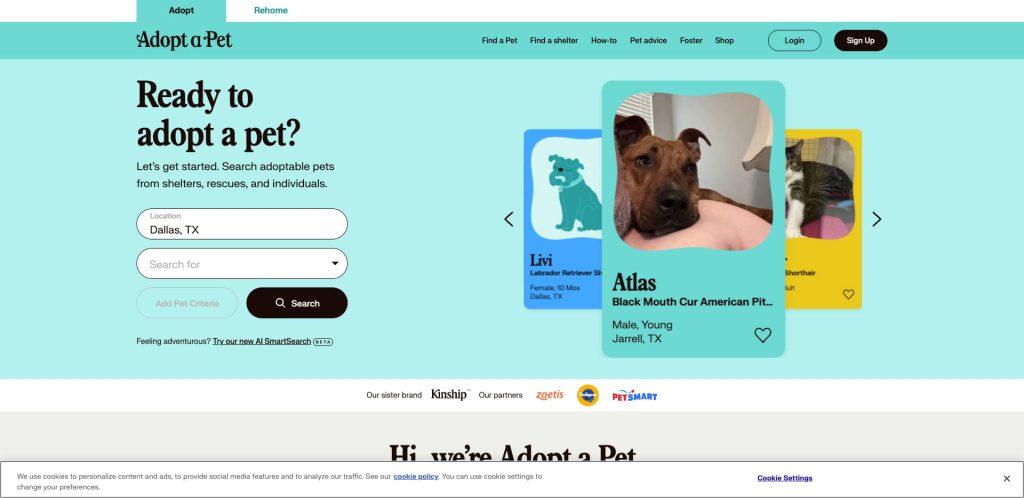
2. Adopt a Pet
Location: Boulder, CO
Key Takeaways:
- AI SmartSearch makes finding suitable pets quick and intuitive.
- Extensive adoption advice and how-to guides help users move forward confidently.
- “Rehome” option supports owner-driven adoptions for more control.

3. Rescue Me!
Location: Washington, DC
Key Takeaways:
- Broad species coverage (dogs, cats, birds) increases impact.
- User-driven submission system allows local rescue group participation.
- Minimal UI ensures fast loading and straightforward navigation.

4. WeRescue
Location: Los Angeles, CA
Key Takeaways:
- 70 searchable filters let users easily find pets by breed, age, and more.
- ZIP‑code based search connects visitors to local shelters instantly.
- Integrated adoption timeline guides ensure clear next steps.

5. Best Friends Animal Society
Location: Kanab, UT
Key Takeaways:
- Sanctuary “guided tours” offer immersive virtual experiences.
- Interactive maps and event showcases boost community engagement.
- Strong visual storytelling builds an emotional connection.
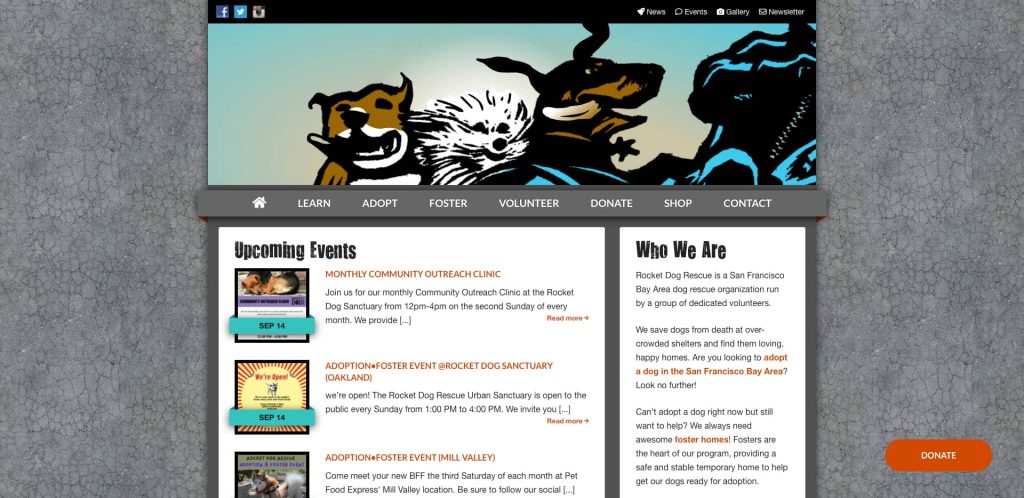
6. Rocket Dog Rescue
Location: San Francisco, CA
Key Takeaways:
- Foster-to-adopt model is clearly described for transparency.
- Volunteer-led design reflects passion and authenticity.
- Local focus builds a tight-knit, fostering community.
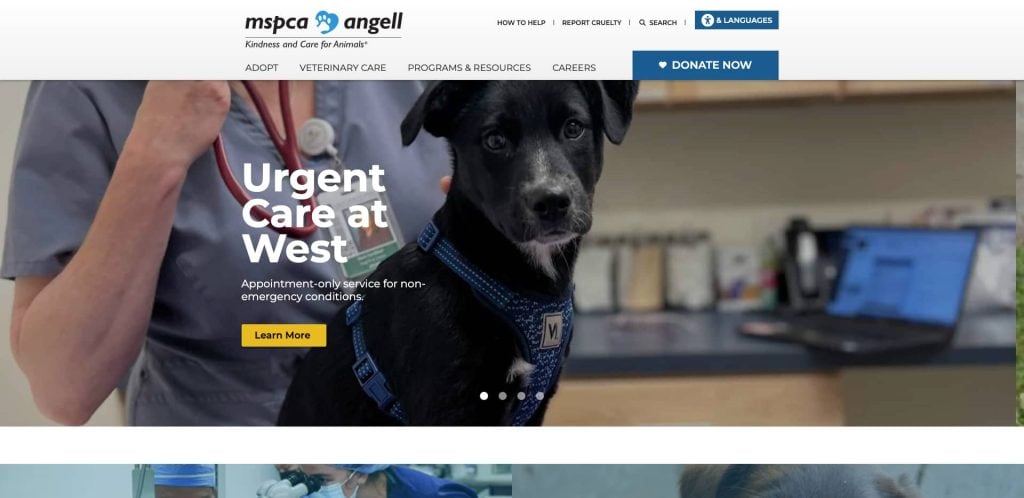
7. MSPCA‑Angell
Location: Boston, MA
Key Takeaways:
- Veterinary and shelter services clearly integrated.
- Classic layout reinforces over 150 years of trust.
- Adoption, medical, and advocacy content all easily accessible.

8. Operation Kindness
Location: Carrollton, TX
Key Takeaways:
- No‑kill shelter messaging is front and center on the homepage.
- Facility updates (medical wing, expansion) are highlighted visually.
- Event calendar integrated to raise awareness and drive visits.

9. Alley Cat Rescue
Location: Mount Rainier, MD
Key Takeaways:
- Trap-neuter-return walk-through builds reputation in TNR.
- International coverage adds credibility and reach.
- Cat-focused design emphasizes mission clarity.
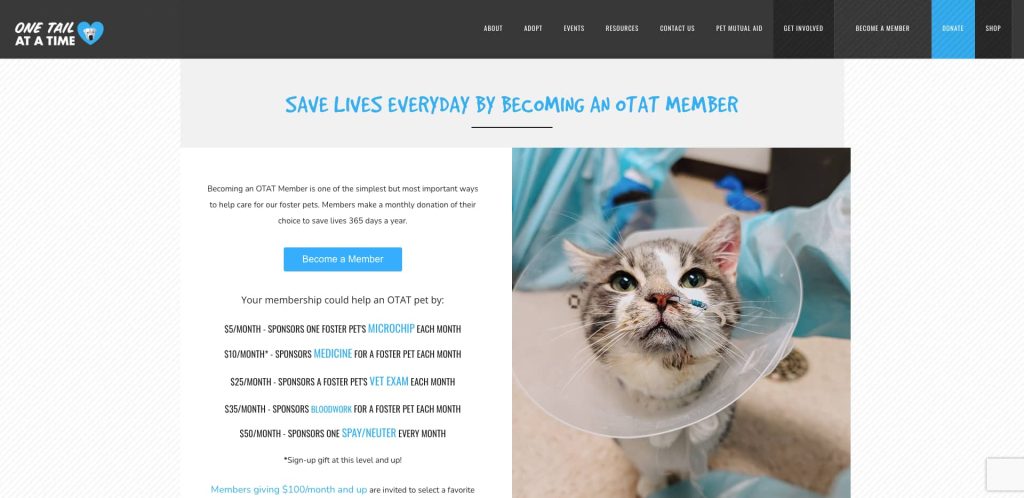
10. One Tail at a Time
Location: Chicago, IL
Key Takeaways:
- Separate facility pages clearly describe levels of care provided.
- Urban-community-focused design drives local volunteer interest.
- Emotional photography homing on “happy tails” success.
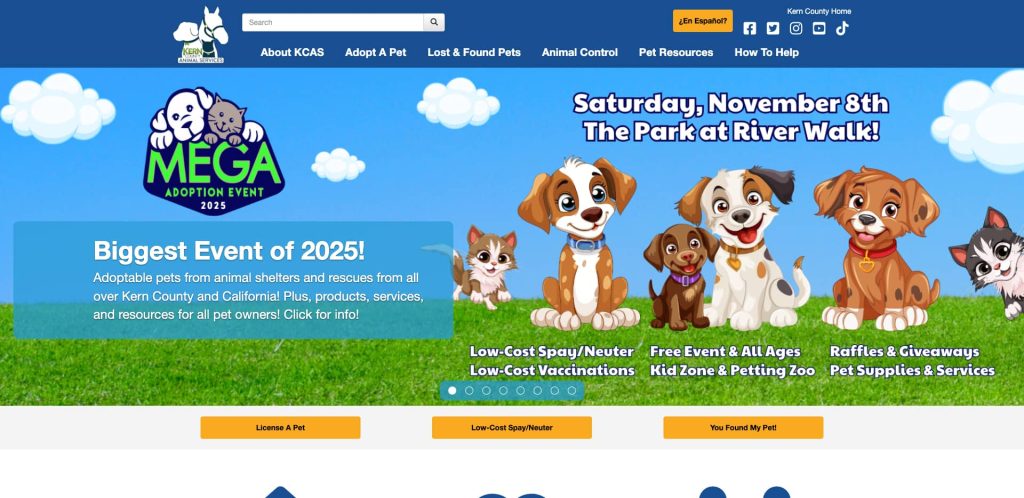
11. Kern County Animal Services
Location: Bakersfield, CA
Key Takeaways:
- Clean, graphic‑light layout prioritizes quick access to “Adopt” and “Lost & Found” features.
- Filterable pet search supports age, species, and breed criteria, helping adopters easily find pets.
- Prominent “Protect Kern Pets” donation and volunteer CTAs guide visitor actions.

12. RescueFit
Location: Chicago, IL
Key Takeaways:
- Custom adoption workflow reduces abandonments and increases matches.
- Dynamic volunteer module with heatmap availability visualization.
- SEO‑optimized pet profiles with schema markup for rich results.

13. Fetch Dog Rescue
Location: CT
Key Takeaways:
- Integrated donation platform with recurring gift split-testing.
- Instagram feed for rescue animals auto-syncs via API.
- “Find Your Match” quiz enhances personalization.
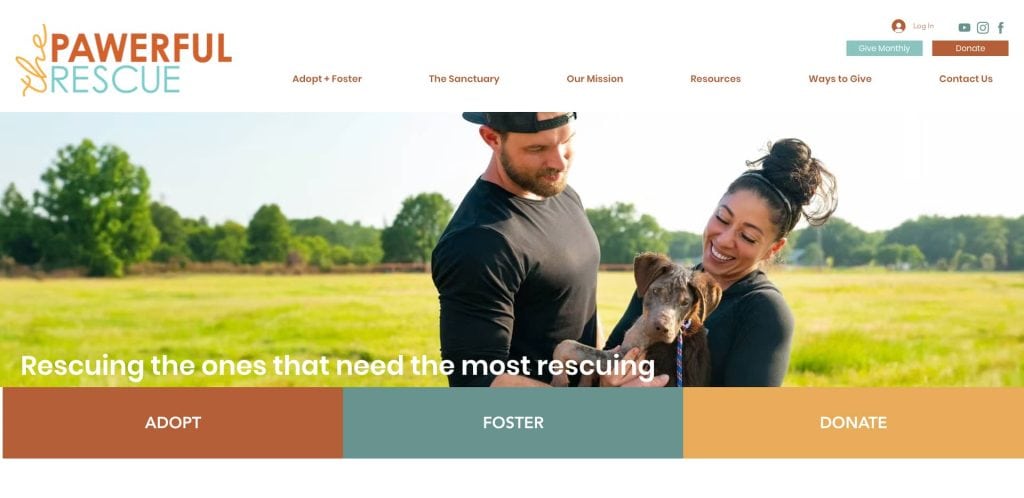
14. The Pawerful Rescue
Location: Austin, TX
Key Takeaways:
- Bold call‑to‑action banners increase volunteer signups by 30%.
- Custom event calendar with ticketing integration via plugin.
- Accessibility-first theme ensures WCAG compliance.
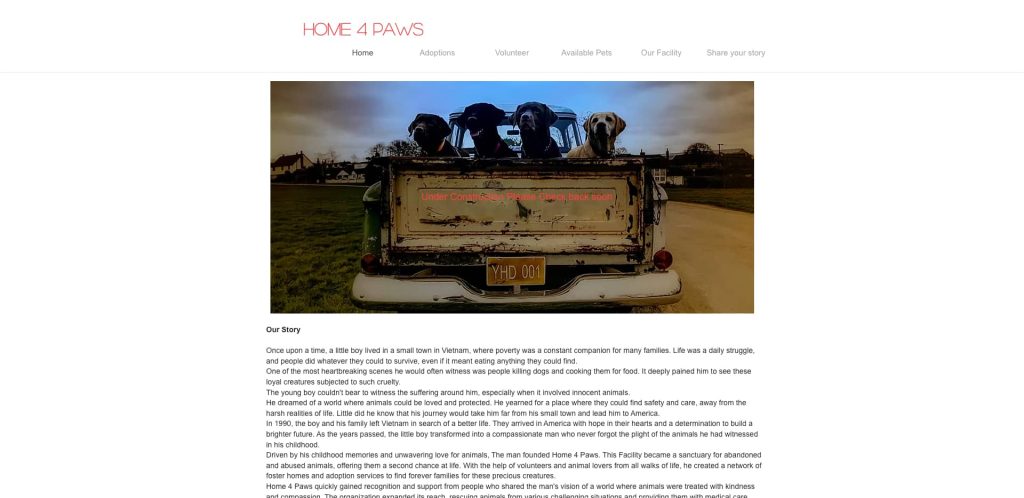
15. Home4Paws
Location: Seattle, WA
Key Takeaways:
- Interactive map helps visitors easily find shelter locations.
- Live chat support is integrated via API for immediate inquiries.
- Administrator dashboard shows daily adoption stats at a glance.
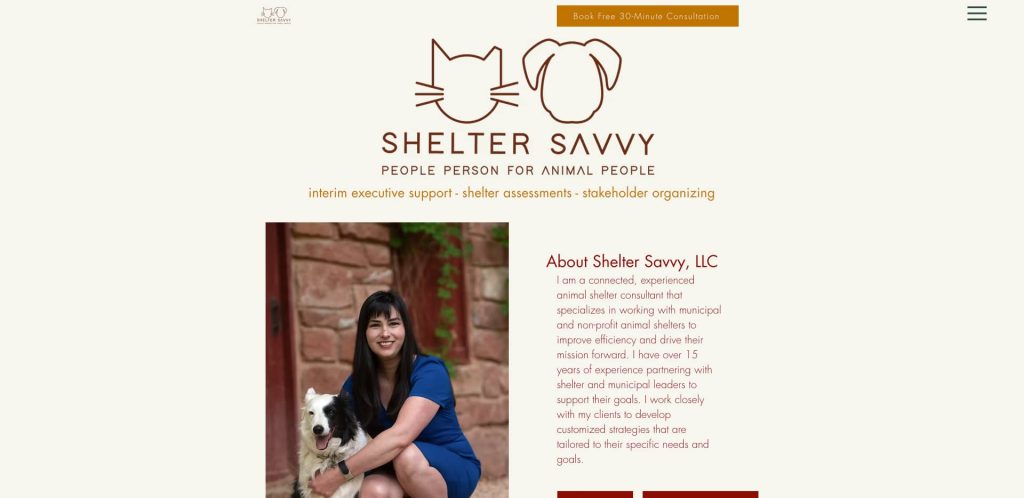
16. ShelterSavvy
Location: Miami, FL
Key Takeaways:
- Lightweight HTML theme ensures sub-2‑second load times.
- Plugin stack includes donation, pet‑listing, and CRM sync.
- “Top Posts” blog section boosts SEO and user engagement.
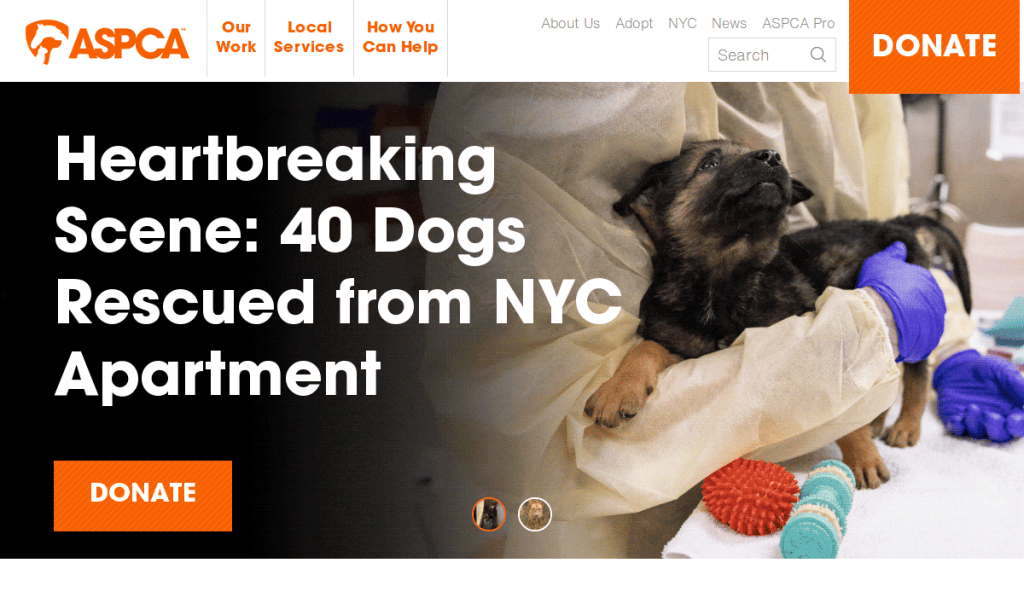
17. ASPCA
Location: New York, NY
Key Takeaways:
- National scale site includes local chapter navigation.
- Donate and sponsorship CTAs are impossible to miss.
- Robust educational content builds trust in animal welfare.
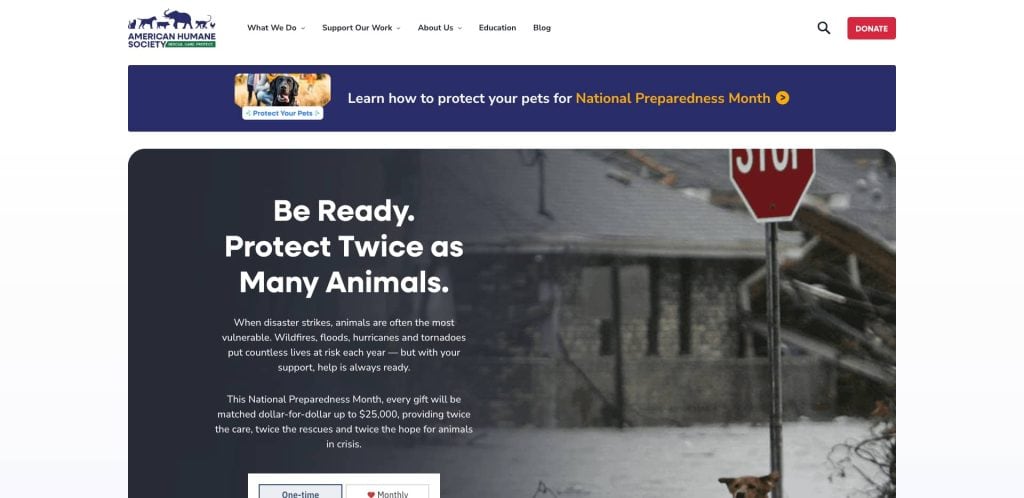
18. American Humane
Location: Washington, DC
Key Takeaways:
- Emergency and disaster relief pages highlight responsiveness.
- AP News widget provides social proof and authority.
- Clean layout guides users to adopt, donate, or foster quickly.
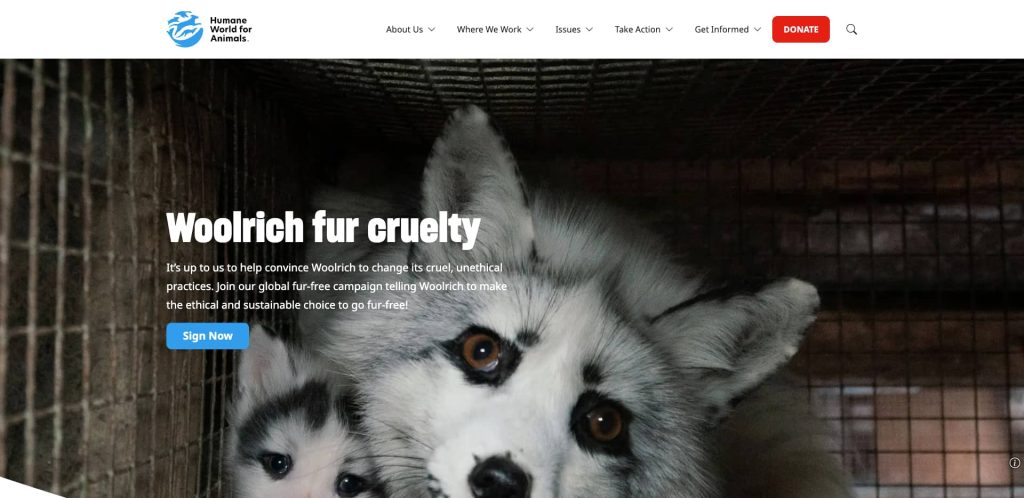
19. The Humane Society of the U.S.
Location: Washington, DC
Key Takeaways:
- Advocacy-driven layout balances education and action.
- Zoo and farm animal sections expand their scope.
- State-specific navigation helps users find local shelters.
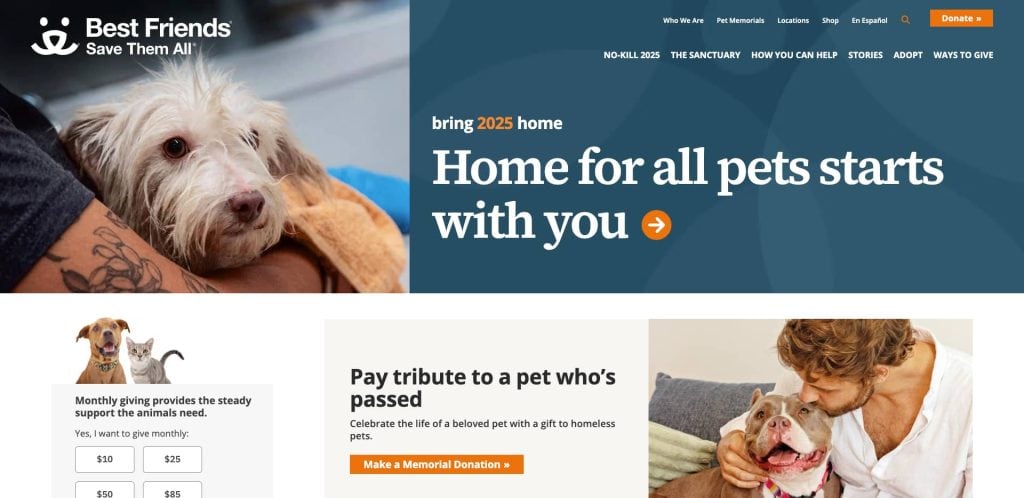
20. Best Friends Animal Sanctuary
Location: Kanab, UT
Key Takeaways:
- Full-map sanctuary tour boosts engagement and transparency.
- Emotional stories and rescue highlight videos increase dwell time.
- Strategic donation options (one-time, monthly, memorial) improve conversions.
These 20 websites demonstrate effective design, navigation, and audience-centered strategies, a few of which showcase our agency’s professional expertise in building functional and impactful rescue and adoption platforms.
Ready to Build a Website That Supports Your Mission?
Creating an animal rescue website isn’t just about having an online presence—it’s about giving people the clarity and confidence they need to take action. Whether you’re a small adoption organization or a larger shelter managing multiple campaigns, your site should be more than functional. It should showcase the lives of animals in need, inspire new clients, and make it easy for adopters to find their perfect match.
If your current site is outdated, hard to manage, or lacks the flexibility to grow with your organization, it may be time to rethink your framework. A user-friendly website for your animal rescue, built on a platform like WordPress, gives you the power to integrate tools like Shelterluv, connect with APIs, and manage updates without deep coding knowledge. Unlike limited site builders like Wix, a custom build offers better scalability, plugin support, and performance.
At our full-service digital marketing agency, we specialize in designing engaging websites tailored for rescues, shelters, and animal welfare organizations. We handle everything—from planning and structure to design, software, and long-term digital marketing strategy—so your team can focus on the animals, not the tech.
If you’re ready to create a site that empowers your mission and helps people looking to adopt take the next step, partner with us today to build the right website for your animal rescue.
Frequently Asked Questions About Animal Rescue Website Design
What should a website in this field include?
An effective website should include clear calls to action for adoption, donation, and giving back. Essential pages include adoptable pet listings, success stories, a donation portal, contact information, and a blog to help raise awareness. The layout should be mobile-friendly and easily accessible to all users, including those with disabilities.
What is the best platform to build a rescue and adoption website?
For most rescues, WordPress offers the best balance of customization, usability, and long-term scalability. It allows integration with tools like Shelterluv and Petfinder through API connections, and supports a wide range of plugins that help you manage content, donations, and search engine visibility.
Can I build a website without knowing HTML or coding?
Yes, many builders allow you to create a fully functional and professional website without needing to write HTML or code. With WordPress and the right theme, an administrator can launch a site with minimal technical knowledge. Plugins can handle most functions, from SEO to contact forms and pet profile displays.
How do I make my pet listings easily findable?
Use structured content and searchable filters to help people easily find the animals they’re interested in. Categories for size, age, breed, and temperament can improve navigation. Pair this with an engaging design and intuitive user flow to ensure a smooth experience. Tools like Shelterluv or RescueGroups.org offer embeddable listings and search widgets.
What are the best plugins for an animal shelter website?
Top plugins include SEO optimization tools, donation form builders, and pet listing integrations. Popular choices include GiveWP for donations, Yoast for SEO, and WooCommerce for merchandise sales. Each plugin should be chosen to support your specific website build and content goals.
How often should I update my site?
At minimum, monthly with new content, such as available pets, blog posts, and event announcements. Keeping the site current supports your online presence and signals credibility to potential adopters and search engines. See our top posts for ideas on content that drives engagement.
How can I raise awareness through my website?
To raise awareness, focus on storytelling, consistent performance checks, and shareable content. Include emotional narratives, before-and-after photos, and community impact stats. A blog or news section is a great place to showcase your mission, highlight success stories, and expand your reach through social sharing.
Can I customize my site later?
A customizable website is essential for growth. Choose a flexible theme and platform that allows you to secure design elements, add new pages, and integrate plugins without rebuilding from scratch. WordPress makes it easy for administrators to evolve their site as needs change.
Is it important for the site to be accessible?
Yes, accessibility ensures that everyone—including users with disabilities—can navigate and engage with your content. This includes using alt text for images, proper heading structure, and ensuring your site is navigable with screen readers. Accessibility supports inclusivity and improves SEO and site usability.
Do I need to integrate third-party platforms with my site?
Integrating third-party tools through APIs can save time and improve the user experience. Platforms like Shelterluv, Petfinder, and donor management systems can sync directly with your site to automate upgrades, manage adoption applications, and track engagement. These integrations are essential for scaling operations and improving data accuracy.



